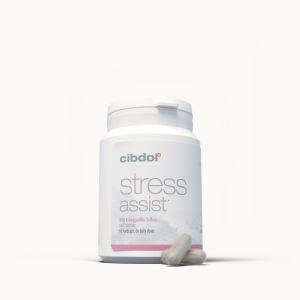Maintain that all-important balance with CBD products
Live the lifestyle you’ve always wanted with the help of Cibdol life supplements. Whether that’s support for your mind, body, or both, our all-natural supplements are here for you. For life.

What our customers say
Stimulate the natural recovery of your body
A good night’s sleep is fundamental to thinking and feeling at your best. Let Cibdol take care of your sleep needs with supplements for falling asleep, staying asleep, and everything in between.

For complete peace of mind
Take control of your thoughts and feelings with the all-natural influence of Cibdol mood supplements. Don’t let mood disorders stop you from doing the things you love, and embrace every moment.
Receive all offers
Sign up for our newsletter and receive a one-time 10% discount
FAQ
Frequently Asked Questions
- What is CBD?
-
Cannabidiol (shortened to CBD) is an organic compound found inside the hemp plant. CBD can interact with a vast network of receptors found inside all of us, causing many unique effects on the mind and body. However, CBD isn't the only molecule that can influence the human body, as it belongs to a broader group called cannabinoids. Read more about CBD.
- What are cannabinoids?
-
Cannabinoids are a group of compounds that includes CBD and other well-known chemicals such as THC, CBC, and CBG. In nature, cannabinoids work alongside other molecules to help plants produce enzymes and deter pests. However, when humans consume cannabinoids via oils or capsules, there's the potential to influence functions such as sleep, appetite, mood, and more. Read more about cannabinoids.
- What is CBD Oil?
-
To transform CBD into an everyday wellness product, the compound is extracted from plant material, added to a carrier oil, and bottled before being sold as CBD oil. While the oil improves how well it's absorbed in the body, the most important factor of CBD oil is the quality and spectrum. Full-spectrum CBD oils are most effective, thanks to the entourage effect. Read more about CBD oil.
- What is the entourage effect?
-
The entourage effect focuses on the concept of chemical synergy. In the case of cannabinoids, the individual compounds come together and augment each other's influence to a degree they can't achieve independently. The most effective way to take advantage of the entourage effect is with full-spectrum CBD products like Cibdol's CBD Oil 2.0. Read more about the entourage effect.
- What is Cibdol’s new CBD Oil 2.0 Formula?
-
Full-spectrum CBD products contain as many of the natural compounds in hemp as possible to capitalise on the entourage effect. CBD Oil 2.0 has greatly enhanced the levels of dominant, non-toxic cannabinoids CBG, CBC, CBN, and CBDA to work alongside our golden-grade CBD. The result is a full-body experience that captures the full wellness potential of hemp in every drop. Read more about CBD Oil 2.0.





















